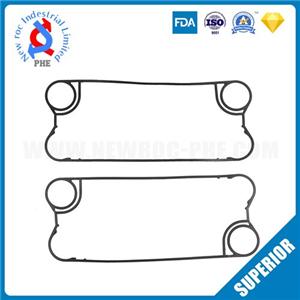Abnormal plate heat exchanger will appear and solutions
Plate heat exchanger is a kind of high-efficiency heat exchange equipment. It has many characteristics that other heat exchange equipment does not have. The plate heat exchanger has high heat transfer coefficient, low heat loss, compact and lightweight structure, small footprint, and convenient maintenance and cleaning. Wide application range and long service life.
However, the plate heat exchanger also has its own shortcomings, such as the pressure cannot exceed 2.5Mpa, the temperature cannot exceed 250 degrees Celsius, and it cannot exchange heat for larger particles and long fibers.
Abnormalities in plate heat exchangers and solutions
For extremely corrosive conditions that cannot be used and are easy to be blocked, the following will analyze some common abnormal phenomena of plate heat exchangers:
1. Leakage of plate heat exchanger
a, shutdown leakage is mainly due to frequent start and stop of the heat exchanger, return to normal working conditions and availability;
b. The internal leakage is mainly due to the damage of the gasket and the corrosion and perforation of the plate;
c. External leakage is mainly due to misalignment, extrusion, damage of heat exchanger gaskets, corrosion and deformation of heat exchanger plates, and incorrect assembly dimensions;
d. Leakage between the end plate of the heat exchanger and the frame plate of the heat exchanger is mainly due to the breakdown of the end plate of the heat exchanger by a hard object.
2. The pressure drop of the plate heat exchanger is abnormal
The pressure drop of the heat exchanger is greater than the design value
a. The actual flow is greater than the design value;
b. Blockage between the heat exchanger plate packages;
c. The inlet of the heat exchanger plate is blocked.
Abnormalities in plate heat exchangers and solutions
3. Abnormal heat exchange of plate heat exchanger
a. The outlet temperature of the hot side is higher than the design value, mainly due to the selection problem, the flow rate of the hot side is greater than the design value, the heat exchanger plate is blocked or the flow rate of the cold side is small, etc.;
b. The outlet temperature of the cold side is too low, mainly because the flow rate of the hot side is small or the temperature is lower than the design value, and the heat exchanger plate is blocked.




